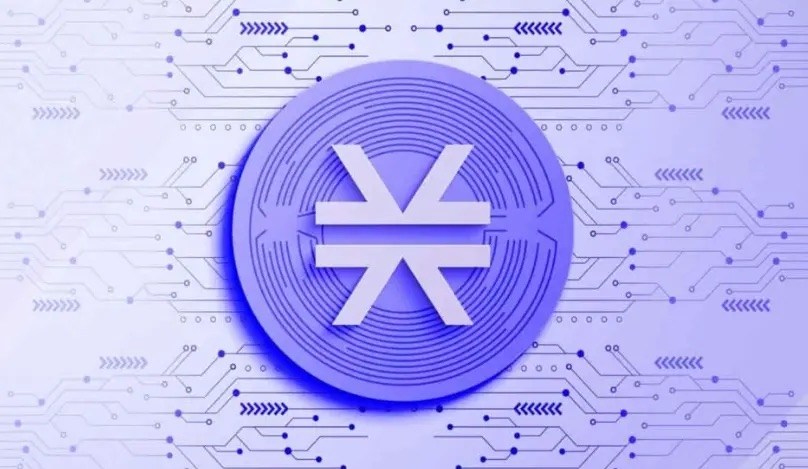SharpLink's Ethereum Treasury Strategy: A Dual-Track Engine for Shareholder Value and Institutional ETH Accumulation
- SharpLink Gaming (SBET) employs a dual-track strategy using Ethereum (ETH) accumulation and stock buybacks to drive shareholder value and institutional crypto adoption. - The company stakes 797,704 ETH ($3.7B) at 0.19% monthly yield, reinvesting rewards to compound ETH concentration (4.00 per 1,000 shares) while repurchasing undervalued shares below NAV. - Risks include crypto volatility, potential $87.8M impairment charges, and regulatory uncertainty, though $200M liquidity and partnerships with Joseph
SharpLink Gaming (SBET) has emerged as a trailblazer in corporate treasury management, leveraging Ethereum (ETH) as both a reserve asset and a yield-generating engine. By combining aggressive ETH accumulation with a disciplined stock buyback program, the company has created a dual-track value creation model that aligns equity and crypto markets. This strategy, however, demands rigorous evaluation of its long-term viability in the face of crypto volatility, regulatory uncertainty, and macroeconomic headwinds.
The Dual-Track Strategy: ETH Accumulation and Equity Buybacks
Since June 2025, SharpLink has amassed 797,704 ETH ($3.7 billion) through a mix of capital raises and strategic purchases. Its “ETH Concentration” metric—ETH per 1,000 diluted shares—has surged from 3.66 to 4.00, reflecting compounding value as Ethereum's price and staking yields grow. Simultaneously, the company's $1.5 billion buyback program targets undervalued shares, reducing the share count and amplifying the ETH-per-share ratio. This flywheel effect ensures that both ETH price appreciation and equity value are mutually reinforcing.
The buyback program is activated when shares trade at or below net asset value (NAV), a threshold tied to the company's ETH holdings. For example, a $0.96 share price (down 6.8% on August 26, 2025) could trigger repurchases if it dips below the NAV of $1.20 per share (based on $3.7 billion in ETH reserves and 3.08 billion diluted shares). This disciplined approach not only stabilizes the stock during downturns but also ensures capital efficiency by prioritizing value-accruing activities.
Staking Yields: Compounding the Flywheel
SharpLink's ETH holdings are staked at a 0.19% monthly yield, generating 1,799 ETH in rewards since June 2025. These rewards are reinvested into further ETH purchases or used to fund buybacks, creating a compounding loop. For instance, $200 million in cash reserves could acquire an additional 43,000 ETH at $4,600 per coin, boosting the ETH Concentration to 4.05. This reinvestment strategy transforms ETH from a static asset into a dynamic, self-sustaining capital source.
Risk Mitigation: Liquidity, Governance, and Regulatory Navigation
Despite its strengths, the strategy faces risks. A 20% drop in ETH's price would trigger an $87.8 million non-cash impairment charge under GAAP, potentially impacting earnings. However, SharpLink's robust liquidity—$200 million in cash and a 6.83 current ratio—provides a buffer against volatility. The company also partners with Ethereum co-founder Joseph Lubin and ConsenSys to optimize staking infrastructure, reducing operational risks.
Regulatory clarity remains a wildcard. The SEC's May 2025 FAQs on crypto custody clarify that Rule 15c3-3 applies only to crypto assets classified as securities, easing broker-dealer custody concerns. While this signals a more accommodating stance, the classification of ETH as a security remains unresolved. SharpLink's transparent governance and institutional-grade infrastructure position it to navigate these uncertainties, but investors must monitor regulatory shifts.
Long-Term Viability: A Model for the Future?
SharpLink's dual-track strategy hinges on Ethereum's long-term appreciation and the company's ability to maintain disciplined capital allocation. If ETH reaches $6,000–$7,000, the company's NAV could surge to $40 per share, unlocking massive upside for equity holders. However, this depends on macroeconomic factors, such as interest rates and crypto adoption, which remain unpredictable.
The key to sustained success lies in compounding. By reinvesting staking rewards and buybacks, SharpLink can amplify its ETH Concentration even during sideways ETH price cycles. For example, a 10% annual staking yield on $3.7 billion in ETH would generate $370 million in passive income, which could fund 80,000 ETH or $80 million in buybacks. This creates a self-reinforcing cycle that outpaces traditional treasury models.
Investment Thesis: Buy, Hold, or Watch?
For investors, SharpLink presents a high-risk, high-reward proposition. The dual-track strategy is innovative but leveraged to ETH's price performance. A bullish case assumes Ethereum's dominance in the institutional crypto space, driven by its staking utility and decentralized security. A bearish case hinges on regulatory crackdowns or a prolonged crypto winter.
Recommendation: Investors with a 3–5 year horizon and a tolerance for volatility should consider a small position in SBET , hedged against ETH exposure. Monitor the ETH Concentration metric and the company's buyback activity relative to NAV. If Ethereum's price stabilizes above $5,000 and the SEC adopts a clearer framework for crypto assets, SharpLink's model could become a blueprint for institutional-grade crypto treasury management.
In conclusion, SharpLink's dual-track strategy is a bold experiment in aligning equity and crypto markets. While risks are significant, the company's liquidity, governance, and compounding mechanics position it to thrive if Ethereum's long-term value proposition holds. For those willing to ride the volatility, this could be the next chapter in corporate treasury innovation.
Disclaimer: The content of this article solely reflects the author's opinion and does not represent the platform in any capacity. This article is not intended to serve as a reference for making investment decisions.
You may also like
Cobie: Long-term trading
Crypto Twitter doesn't want to hear "get rich in ten years" stories. But that might actually be the only truly viable way.

The central bank sets a major tone on stablecoins for the first time—where will the market go from here?
This statement will not directly affect the Hong Kong stablecoin market, but it will have an indirect impact, as mainland institutions will enter the Hong Kong stablecoin market more cautiously and low-key.

Charlie Munger's Final Years: Bold Investments at 99, Supporting Young Neighbors to Build a Real Estate Empire
A few days before his death, Munger asked his family to leave the hospital room so he could make one last call to Buffett. The two legendary partners then bid their final farewell.

Stacks Nakamoto Upgrade
STX has never missed out on market speculation surrounding the BTC ecosystem, but previous hype was more like "castles in the air" without a solid foundation. After the Nakamoto upgrade, Stacks will provide the market with higher expectations through improved performance and sBTC.
